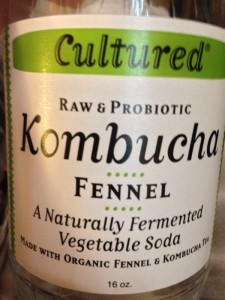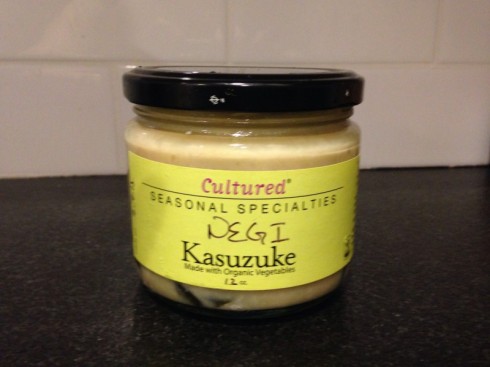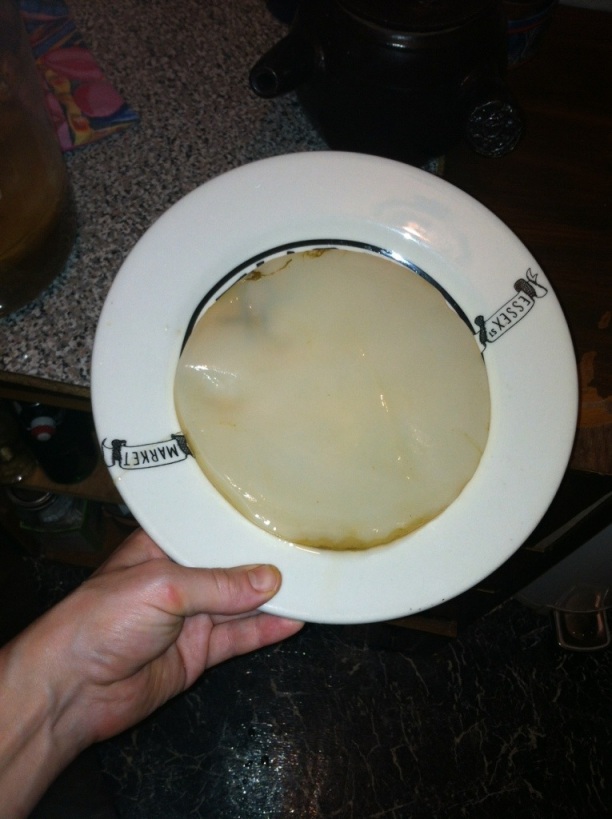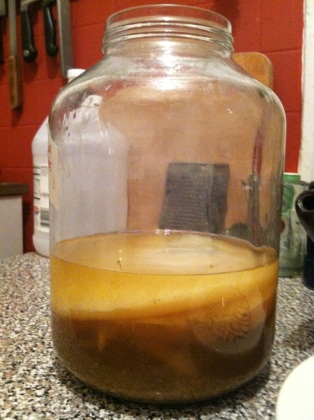Last summer my travels took me to Boulder, Colorado, where I had hoped to gain some insight into the Jun culture. Unfortunately, Tonic “herban” lounge, did not have staff members that were very communicative or interested in the process. This summer, I had better luck meeting fermentation enthusiasts. I was in Berkeley to take a movement workshop that was serendipitously located one block away from a fermentation kitchen called Cultured.
Cultured makes many flavors of kombucha along with pickles, sauerkraut and other things, depending largely on what produce is in season. A single glass-fronted refrigerator serves as a store front. My impression is that most of their product ends up on the shelves of other local establishments. I had the pleasure of catching Alex Hozven, who runs the joint, for a short conversation about her kombucha process.
Alex makes some fancy flavors of kombucha. Over the two weeks I was around, I tried yellow watermelon-juniper flavor, strawberry thyme, cucumber lime, and fennel flavors.
Just around the corner from the fridge, I could see the large fermentation vessels, and they didn’t just hold tea. I was intrigued to see one kombucha container that had fresh nettles in it. (nettles, my favorite!) Another one held floating juniper berries. Alex adds herbs into her primary ferments. I asked her about this, and she explained that kombucha can live in any number of herbal tea environments. For many of her ferments she uses a green tea base, and then adds flavor after the primary ferment (like I do), but with others she uses an herbal tea base and no tea– a great option for people who are avoiding caffeine. With the herbal tea ferments, she uses starter fluid from her latest green tea batch to get it going.
It makes sense that herbal ferments would be best to try with your spare scoby, and not to let them keep going over many generations, or you could degrade the culture. Probably some herbs work better than others, also: I once tried to make a rosemary beer with tibicos, and the anti-bacterial properties of the rosemary killed my grains! Although I frequently do herbal experiments with the primary ferment of tibicos, I’ve always been a purist with my kombucha and jun cultures. Maybe it’s time to branch out….
The other thing that I noticed about Cultured’s kombucha is that the ingredient list includes honey. Alex does not use honey in the primary ferment, but she does add some when she bottles it. The extra sugar in the secondary ferment makes her bottles generously fizzy. Tricky.

The ingredient list: notice the addition of seasonal herbs to the primary kombucha tea ferment, and honey to the secondary ferment.
As I browsed the refrigerator shelves at Cultured, I couldn’t resist picking out the weirdest pickle product possible. They had something called kasuzuke, which is vegetables fermented in sake lees. Sake is Japanese rice wine, and lees is the yeast sediment byproduct of wine making that brewers generally strain out to create a clearer product. I’ve strained the lees out of my blackberry wine and honey wine/mead creations and thrown it away. There were a few kasuzuke vegetable options, but of course I picked the most exotic sounding one. I chose Negi, which turns out to be not so exotic. It’s a variety of green onion. Cultured’s kasuzuke was 16 dollars for a 12 oz container: not something I would buy every day, but also it seems like a many-tiered creation process that I might never take the time to make. Here it is.
I ate some one night on toast along with avocado, but I haven’t fully decided what to do with the stuff. Its appeal is less for newbies and more for seasoned fermentophiles. The gooey white lees takes up just as much room as the veggies in the container. It has a certain “ick” factor to it this way. The taste is oddly sweet and pungent.






